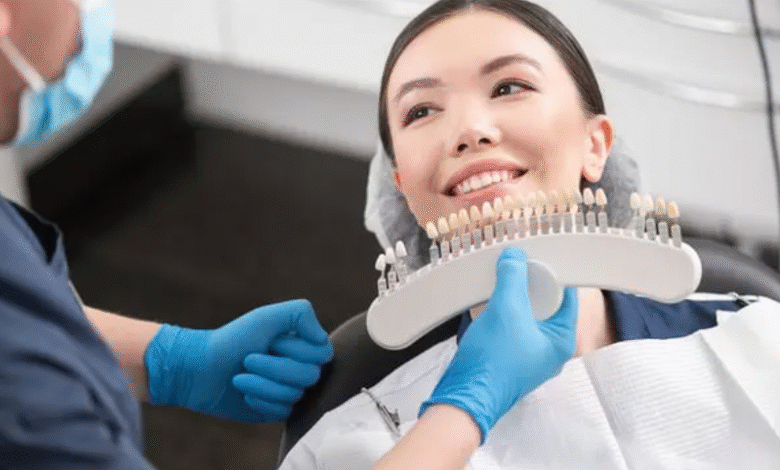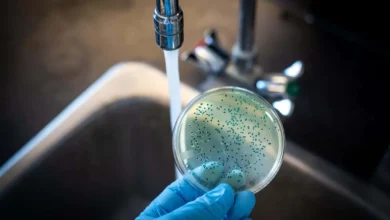Everything to Know About Non-Metal Dental Solutions

Gone are the days when metal was your only option for dental restorations. Advanced materials have revolutionized dentistry, offering patients safer, more aesthetic, and equally durable alternatives to traditional metal implants and crowns.
Non-metal dental solutions provide an excellent choice for patients with metal allergies, those seeking a more natural appearance, or anyone wanting to avoid potential complications associated with metal in their mouth. These innovative materials have gained significant popularity among both patients and dental professionals for their biocompatibility and superior aesthetics.
Understanding your options can help you make informed decisions about your oral health and choose treatments that align with your specific needs and preferences.
What Are Non-Metal Dental Solutions?
Non-metal dental solutions encompass a range of materials used in restorative and cosmetic dentistry that don’t contain traditional metals like titanium, gold, or amalgam. These alternatives are crafted from biocompatible materials that integrate well with your natural oral environment.
The most common non-metal materials include zirconia, ceramic, composite resins, and various polymer-based compounds. Each material offers unique benefits and is suited for different dental applications, from fillings and crowns to complete tooth replacements.
These solutions have been extensively tested and refined over decades, making them reliable options for long-term dental health. They’re designed to withstand the daily stresses of chewing, grinding, and normal oral function while maintaining their structural integrity.
Types of Non-Metal Dental Materials
Zirconia
Zirconia stands out as one of the most popular non-metal options for dental restorations. This ceramic material is incredibly strong, biocompatible, and naturally white, making it virtually indistinguishable from natural teeth.
Zirconium oxide dental implants in Oregon City have become increasingly sought after by patients who want durable, metal-free solutions. This material offers excellent osseointegration, meaning it bonds well with your jawbone, creating a stable foundation for replacement teeth.
All-Ceramic and Porcelain
Traditional porcelain and modern all-ceramic materials provide exceptional aesthetic results. These materials can be color-matched precisely to your existing teeth and offer translucency that mimics natural enamel.
All-ceramic crowns and veneers are particularly popular for front teeth restorations where appearance is paramount. They resist staining better than composite materials and maintain their color over time.
Composite Resins
Composite resins are tooth-colored materials commonly used for fillings, bonding, and minor cosmetic improvements. They’re made from a mixture of plastic and fine glass particles, creating a durable yet natural-looking restoration.
These materials can be applied in layers and shaped to match your tooth’s natural contours. They bond directly to your tooth structure, often requiring less removal of healthy tooth material compared to traditional metal fillings.
See also: How to Find a Doctor Who Truly Cares About Your Health
Benefits of Choosing Non-Metal Options
Superior Aesthetics
Non-metal dental solutions blend seamlessly with your natural teeth. Unlike metal restorations that can create dark lines at the gum line or show through thin enamel, non-metal options maintain a natural appearance even as your gums change over time.
Biocompatibility
These materials are highly biocompatible, meaning they’re well-tolerated by your body’s tissues. They don’t cause allergic reactions or sensitivity issues that some patients experience with metals.
No Metal Taste or Corrosion
Metal-free solutions eliminate the metallic taste that some patients notice with traditional restorations. They also don’t corrode or tarnish over time, maintaining their integrity and appearance.
Temperature Insensitivity
Non-metal materials don’t conduct heat and cold like metals do, reducing sensitivity to temperature changes in foods and beverages.
Applications in Modern Dentistry
Non-metal solutions can address virtually any dental restoration need. They’re used for single tooth replacements, multiple tooth restorations, full mouth reconstructions, and cosmetic improvements.
Dental implants made from these materials provide excellent alternatives for patients who cannot or prefer not to have metal implants. They offer comparable success rates and longevity when properly placed and maintained.
Crowns, bridges, and veneers made from non-metal materials provide long-lasting solutions that maintain their appearance and function for many years with proper care.
Considerations and Limitations
While non-metal dental solutions offer numerous advantages, they may not be suitable for every situation. Some materials require specific preparation techniques or may have different maintenance requirements compared to traditional options.
Cost can be a consideration, as some non-metal materials and the specialized techniques required for their placement may be more expensive than conventional treatments. However, many patients find the benefits justify the investment.
Your dentist will evaluate your specific situation, including the location of the restoration, your bite patterns, and your aesthetic goals, to recommend the most appropriate material for your needs.
Making the Right Choice for Your Oral Health
Non-metal dental solutions represent a significant advancement in dental care, offering patients safe, effective, and aesthetically pleasing alternatives to traditional metal restorations. These materials have proven their durability and reliability through years of clinical use and continue to improve with ongoing research and development.
When considering dental treatment, discuss non-metal options with your dentist. They can explain which materials would work best for your specific situation and help you understand the long-term benefits of choosing these advanced solutions for your oral health needs.





